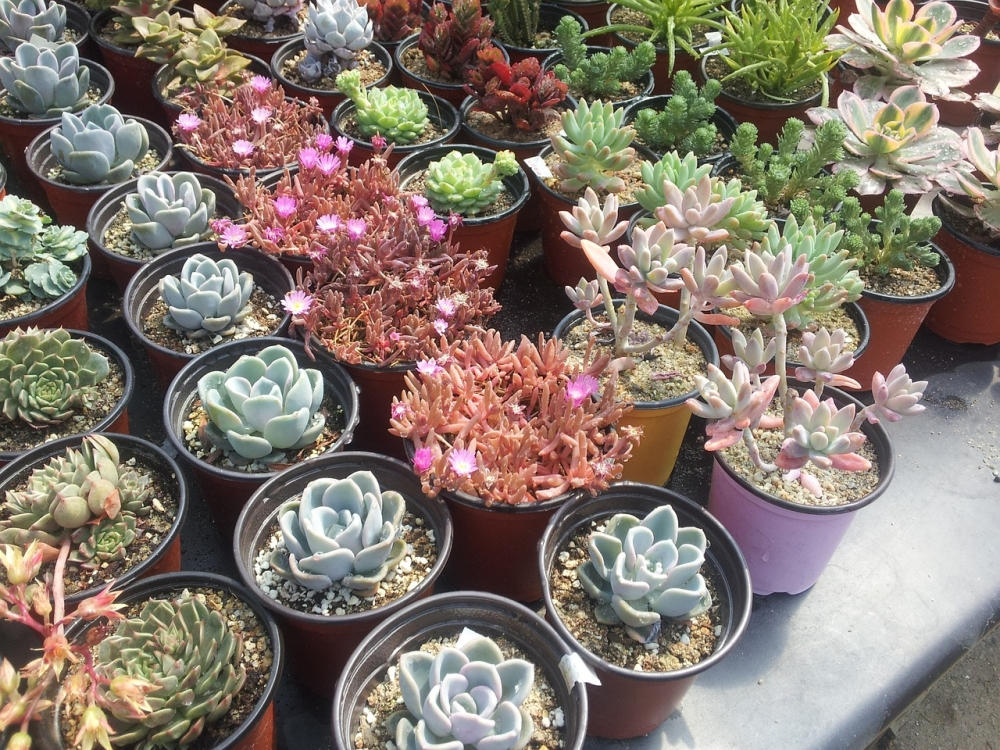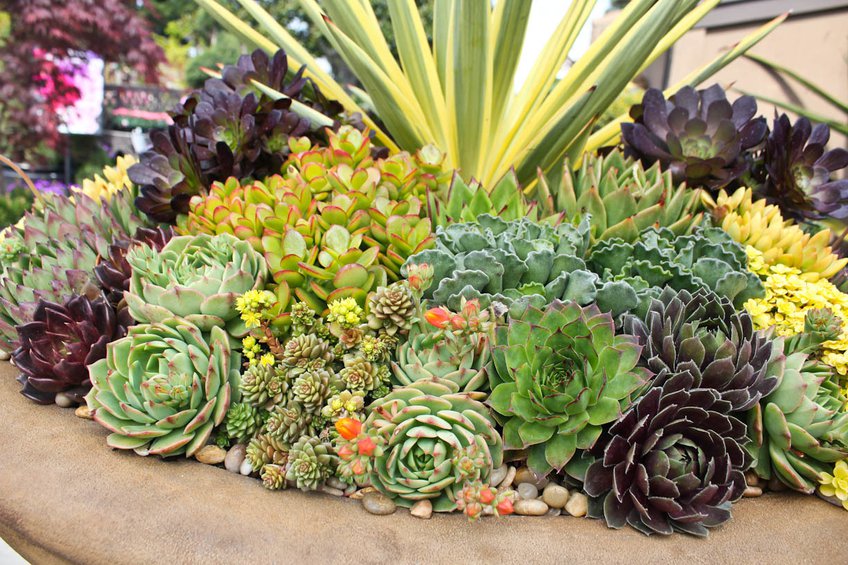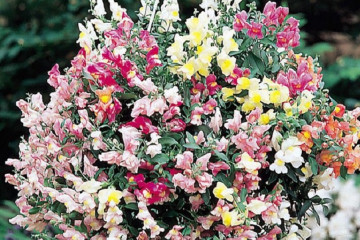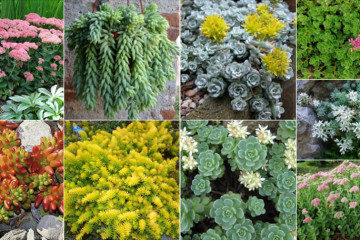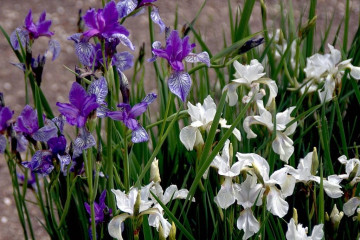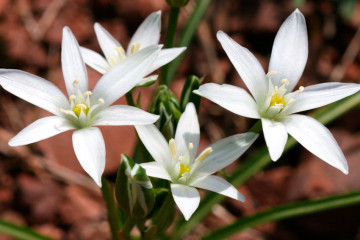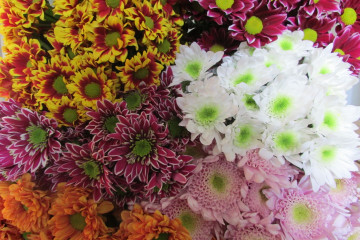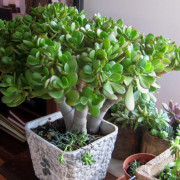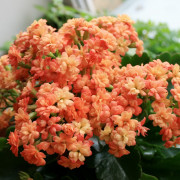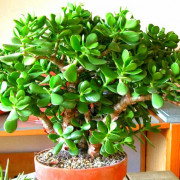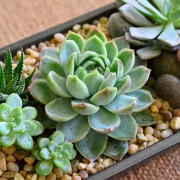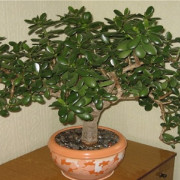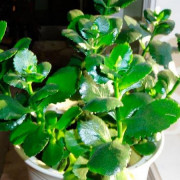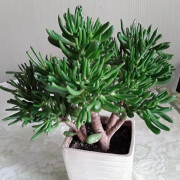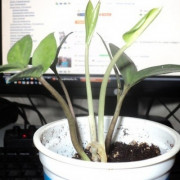Succulents street perennials - planting and care
Content:
The terrestrial flora is rich and varied. Among the usual trees, shrubs, grasses growing in certain natural zones, there are special plants that differ in appearance and way of survival in dry times. This group of evergreen fleshy centenarians was called succulents, which means the ability to accumulate moisture in their tissues. A sufficiently developed shell and a slow evaporation process in the daytime ensure the preservation of water in swollen leaves and stems.
Succulents - outdoor perennials
Only plants with special tissues capable of storing water can survive in regions with difficult arid climates. People have learned to grow succulents in a supportive home environment. Succulents on the street are still used as an exotic decoration. Bright cactus flowers and their fleshy leaves, unusual in appearance, decorate and enliven sunny gardens. Unusual potted compositions, skillfully composed of different types of succulents, began to appear more often on the streets.
Levisia
Among succulents, a low bush, strewn with large, ball-like inflorescences, occupies a special place. This is levisia. The plant is characterized by the resemblance to a live bouquet. A combination of numerous colors and shades came together in a small drought-resistant bush.
Rejuvenated
The flower rejuvenates is an ideal succulent for creating alpine slides, their lower tier. During flowering, it is especially similar to a thornless cactus that happened to be in the Middle Lane. Growing young, propagating an exotic plant is not difficult, it can take root in any soil, even without roots.
Bacopa
Bacopa ampelous grown in hanging baskets looks original in street design. Its unusualness is expressed in small leaves and flowers of different colors (blue, white, pink). These creeping succulents are capable of forming a root system wherever the shoots come into contact with the soil. A wonderful combination of colors and shapes is obtained in the vicinity of other floral plants. Here you can experiment as much as you like.
Dorotheanthus
This miniature South African plant has become a characteristic feature of the garden decoration. Succulents in the garden in the form of this bush transform the territory with bright flowers and unusual-looking shoots. Many growers have chosen this look, similar to the usual daisies, which begins flowering in June and ends in mid-autumn. Such a long flowering period is possible with proper care. Green leaves with shimmer, covered with shining villi, multi-colored and even two-colored buds emphasize the unusualness of the peduncles.
Aptenia
The South African and South American continents presented another evergreen plant called Aptenia. The peculiarity is expressed in the name, which in Greek means that aptenia blooms at noon. The name is true. The fleshy leaves of a bright green wedge-shaped shape with smooth edges are oppositely arranged.Small round flowers bloom in their sinuses, highlighting in all shades of purple.
Delosperma
It stands out among succulents by the appearance of unusual salt crystals on a green surface, which resembles an ice cover on leaves. Low shrubs are covered at the time of flowering with a bright multicolored scattering of petals. At home, they grow like perennial succulents, only some species manage to survive the winter in summer cottage garden plantings.
Spurge myrtle
Gardeners fell in love with Euphorbia for its beauty, undemanding conditions. There are known varieties of annuals and perennials, evergreen bushes and tree-like frost-resistant plantings. Spurge with its decorativeness and originality contributes to the design of borders, flower beds. It is used in garden or park areas when creating a rocky slide or rock garden. Various plants are planted there along with milkweed.
Ragwort
The number of flowering varieties is great, the most numerous among them is the genus of the Cross, numbering about 1200 species. Some of them are attracted by their unusual silvery foliage, the other part has bright flowers, similar to familiar chamomile, the third part best decorates, for example, the coastline of a dacha pond. Grasses stand out from the species diversity. There are known tree-like wild plants (African species), shrubs, and lianas.
Groundcover or creeping succulents
Gardeners, landscape designers know plants that are called ground cover species. Their essence is that these undersized, and sometimes creeping seedlings are actively spreading over the area, capturing the territory in a special way. It turns out a kind of carpet of creeping succulents.
Sedum
This flowering beautiful plant came to the middle latitudes, like other succulents, from dry American, African, Eurasian regions.
Survives drought due to its natural ability to absorb and retain water in the leaves. The stems of the sedum are erect, up to 80 cm high, with inflorescences of different shades and shapes.
Succulents in a flowerbed
Nature has not deprived the territory with an arid climate with exotic vegetation. It was there that perennials with fleshy thick leaves took root. People learned how to grow them at home long ago, succulents began to appear in flower beds, although this is a rare phenomenon so far. But a sunny garden is suitable for cultivation conditions. You can try to plant in a small area in the form of annuals.
Landscaping will only benefit from the presence of voluminous flowerpots with rare plants on the street.
How to create a garden of succulents with your own hands in the country
Out of inexperience, from the noblest motives, it is mono to get a flower mess from a beautiful flower bed. Decisions resulting from an emotional outburst are unacceptable here. Garden succulents will be lost in this confusion, all their charm will become an unsightly spot.
As in any serious business, here you need to plan, carefully think over everything, how to break the site, what seedlings to prepare.
- You need to prepare several identical copies for planting, an odd number of each is preferable.
- Sketch out in what places, what color spots will be placed.
- Maintaining symmetry, distribute the repeating color tact, that is, you need to draw a flower garden.
- Pay attention to the arrangement of silver-colored plants to give harmony and completeness to the design plan.
Succulents for an alpine slide
Your garden, for example, in the Moscow region can be improved by arranging a man-made rock garden. This action is bold, every flower lover is able to be original on his site. For this purpose, street succulents are used. A well-lit area of the garden can serve as an ideal place. The background will be the facade of the building.
However, before proceeding with the design, starting the design of the garden, it does not hurt to work with special literature, enrich the knowledge about the plant world.
Succulents in the garden: planting and care
Unusually beautiful and unpretentious in care - this is how succulents are characterized. In any region: in Siberia, the Urals and the western regions, the requirements are the same. They need plenty of light, a convenient container or pot to grow, and minimal care from a grower.
Housing design, public institutions benefit from the cultivation of unpretentious flower stalks.
Succulents outdoors: how they winter
Wintering of succulents in temperate regions has become possible thanks to the passion, resourcefulness of gardeners and florists. It was through the efforts of enthusiasts that cacti and other southern representatives of the plant world came out into the open ground. Even wintering succulents have appeared for the garden, agrotechnical methods have been developed for their cultivation in open space.
What soil to plant
Oddly enough it sounds, but it is necessary to grow succulents in open ground in loose, poor, clayey and even stony soil. Such conditions allow moisture and air to penetrate freely to the roots. With regard to clay soil, there is a judgment among experts that this mineral substrate meets the basic requirements:
- inertia;
- chemical neutrality;
- ability to retain water;
- aeration;
- strength.
It is not worth overfeeding succulents, because of this they bloom less often, the color of the flowers fades, the needles do not develop enough, the plants lose their survival during the wintering period.
Fertilizer
Florists should not often water, feed with black soil and heat succulents in winter. Winter is the time when it is better to leave the plants alone, not to fertilize. An excess of fertilizer provokes the growth of multiple thinned, weak shoots.
In the spring, feeding is carried out no more than 1 time per month with low concentration fertilizers. Specialty mineral supplements are available at flower shops.
Diseases and pests of succulents
Beautiful undemanding plants have earned popularity due to their bizarre shapes and ease of care. But they can get sick from improper care, damage by insects or fungi, rot.
Therefore, it is necessary:
- observe the regime of watering, replenishment;
- provide the bottom of the landing pit with a drainage mixture;
- there should be a hole at the bottom of the vase;
- propagate vegetatively in spring and summer with cuttings aging before planting for several days in the air, thereby protecting against the penetration of parasites into the cut.
Distribution in gardens, parks of succulents is justified. The originality, uniqueness of natural creation creates a good mood, ennobling the territory. The main thing is to choose the right types of plants and provide them with proper care.
